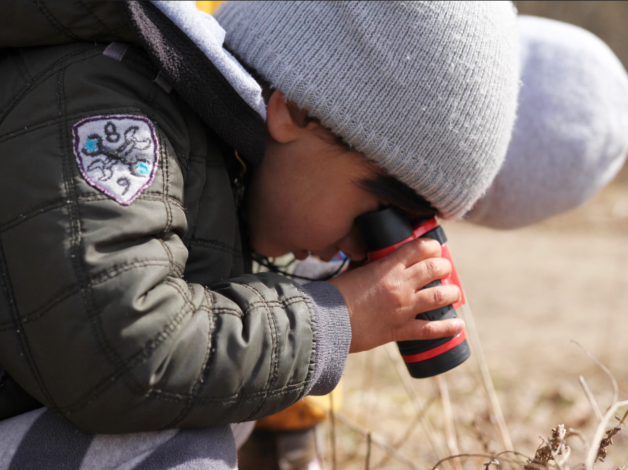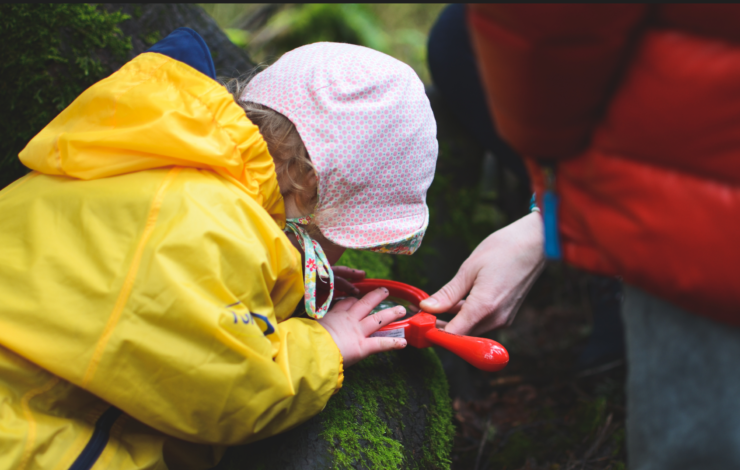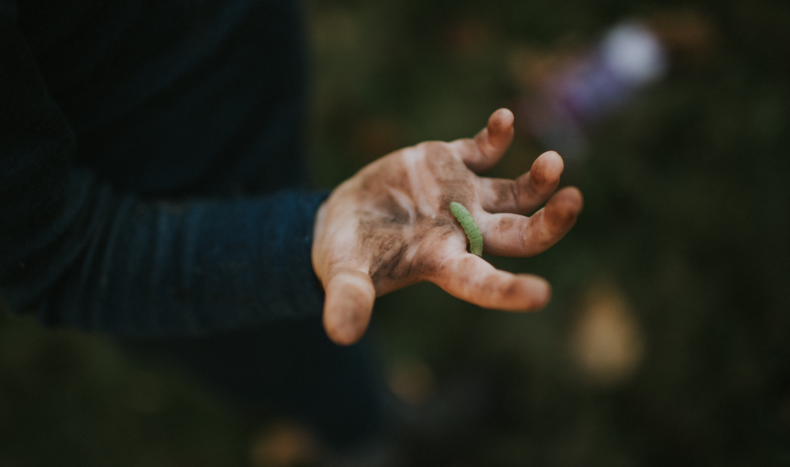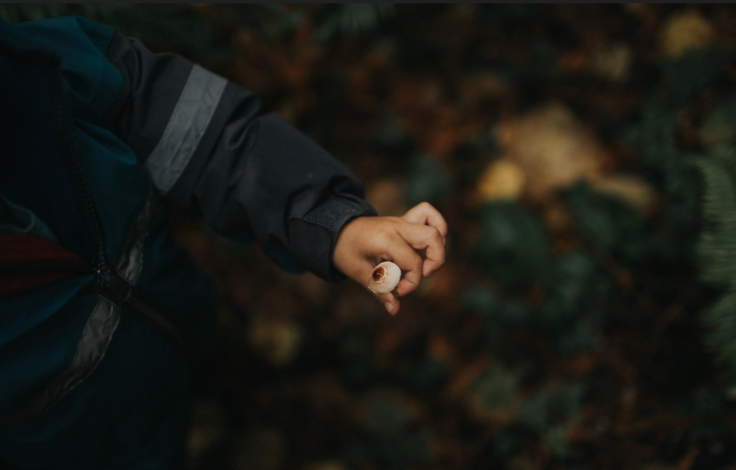Explore the Nature Near You
Nature is all around you! Taking a few steps out your front door and down the street, or out the back door to explore your yard will show you that there are a variety of plants, insects, fungi, animals and other wildlife all around you. Let’s get started exploring the nature near you!
Make a Plan
Decide where to look - do you want to explore trees, in the grass, bushes or even cracks in the sidewalk? You’ll find different types of creatures in all of these spots. Looking for more ideas? Think outside of the obvious nature spots. You can even find dead plants teeming with life. For example, check out this activity sheet from Oregon Metro and Sneak a Peek at a Snag!
Gather Some Adventure Tools
Have your kiddos grab their favorite tools to help them investigate further! Have them grab binoculars, a magnifying glass, a nature journal and pencils, a camera or anything else that helps them explore their environment. Since you might be holding the phone and using the SEEK app, make sure your helpers have the tools to get excited about identifying native species so they can learn more about the nature around them.

Photo by Ali Chandra
Download the SEEK app
Visit SEEK by iNaturalist to download the SEEK App on Google Play or the Apple Store.
Head out the door with your kiddos to go on an identification exploration!
Get down on the ground and see what insects, plants, birds or fungi you might encounter. Snap photos in the SEEK app to identify what you’ve found.

Photo by Kim Ives
Once you head back inside, let’s learn more about what you found outdoors!
There are so many ways to learn more about the nature near you. I don’t know about you, but my kids constantly have questions beyond “what’s that bird” or “what kind of bug is that?”. They usually want to know what the bird eats, or what kind of predators live off of bugs. Between library books and internet searches, we can find the answers! To satisfy your little explorers, here are some suggestions on how to take your adventure one step further:
1- Native v Invasive Plant Species
What are native plants? The term “native” plant refers to plants that are indigenous to a particular geographic region. Native plants, animals and other wildlife exist naturally in an area, and were not introduced there by humans. They've been in your region longer than you have!
Why are they important? According to the National Wildlife Federation, native plants help the environment the most when planted in places that match their growing requirements. They thrive in the soils, moisture and weather of your region. That means less supplemental watering, which can be wasteful, and pest problems that require toxic chemicals. Native plants also assist in managing rainwater runoff and maintain healthy soil as their root systems are deep and keep soil from being compacted. Native plants also provide the best food, shelter and diversity that wildlife needs to thrive over the long term.
Invasive Species are those that have been introduced to an area by humans. They can be very damaging to local ecosystems as they may cause the extinction of native species of plants and animals by using up resources needed by those native plants. They can alter habitats, and if they don’t have any predators in this environment, they may grow unchecked and change the whole ecosystem. Take a look at the plants you identified in your SEEK app, and search on one of these plant finder websites like the The National Wildlife Federation's Native Plant Finder or The National Audubon Society's Native Plant Database.
2- Learn More About Bugs, Worms, Butterflies and Creepy Crawlies
There seem to be two camps of kiddos - those who LOVE bugs, and those who are terrified of them! Both groups can benefit from learning more about insects. Those who love bugs and want to learn more will be excited to see more pictures and learn about how they grow and where they live. The kiddos that aren’t the biggest bug fans might enjoy learning more about why certain bugs are important, and how they can help the nature around them. Once you identify some interesting insects, look them up at a place like Insect Identification. 

Photos by Ashley Scheider
3- Discovering Birds
If you happen to find a lot of birds on your adventures, be sure to check out The National Audubon Society's Bird Guide to learn more about the birds you’ve identified. You can find out where they live, what they eat, how they grow, the impact of climate change on them, and even hear their songs and calls. Maybe you’ll be able to identify some of those calls that you hear all of the time but weren’t sure who was making them!
The best part about checking out the nature around you is that it will constantly change with seasons and weather! What did you find on your adventure today?
ABOUT OUTGROWN
OutGrown is a 501(c)(3) nonprofit that works to create a world where everyone can enjoy the physical and mental benefits of spending time outside. We are focused on creating opportunities and removing barriers to access so families with babies and young children can take their first steps outside. We believe all families have the right to connect with nature, benefit from spending time outdoors and be inspired to a lifelong love of nature. Since its grassroots inception in 2013, OutGrown is a growing community of 280,000 families and over 300 volunteer Branch Ambassadors. More information on all of our programs can be found at WeAreOutGrown.org
EDITORS NOTE:
We hope you enjoyed reading this article from OutGrown. We’re working hard to provide our community with content and resources that inform, inspire, and entertain you.
But content is not free. It’s built on the hard work and dedication of writers, editors, and volunteers. We make an investment in developing premium content to make it easier for families with young children to connect with nature and each other. We do not ask this lightly, but if you can, please make a contribution and help us extend our reach.
Related Content





Comments